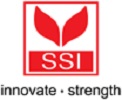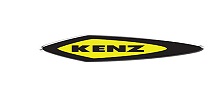Get a Project Report
Profitable Business Ideas for Startups
GLOBAL RICE HUSK ASH INDUSTRY
The global rice husk ash market is expected to grow at a CAGR of 5.4 percent over the next five years. Rice husk ash (RICE HUSK ASH) is a natural residue of rice husk processing that is recovered from paddy rice. The husk is made up of around 50 percent cellulose, 30 percent lignin, and 20 percent silica.
It is burnt by controlled thermal breakdown, which converts waste material into amorphous silica ash (between 89-95 percent). This ash decomposes into a very pozzolanic substance with a very high surface under controlled heat decomposition. Rice husk ash, which is created by controlled combustion of rice husk, has a strong pozzolanic property and reactivity, making it a useful cementing material in the construction sector, either as a cement alternative or as an additive. Rice husk ash is used as an additive in high-strength concrete, and rice husk ash is utilised to replace cement in low-cost building blocks. Rice husk ash also aids industry players in obtaining carbon credits by reducing greenhouse gas emissions. Rice husk ash is also utilised to manufacture light-weight construction materials, as the addition of rice husk ash to concrete makes it lighter.
BENEFICIAL USES OF RICE HUSK
Rice husk is difficult to store due to its vast volume, and it is also difficult to remove. If not entirely burned, it produces rice husk ash or carbonised rice husk, which pollutes the air. The following are just a few of the many uses for rice grains that have evolved over time:
Use in Horticulture for Soil Aeration–Scientists recommended that rice husk be applied to soil to increase soil aeration. Husk, with its high potassium and silicon content, helps to amend the soil, enhance its characteristics by reducing soil bulk density, boost fertility by creating air pockets underneath, and acts as a rice conditioner.
For Making Animal Bedding–One of the more straightforward uses of husk is to make bales that provide cushioned animal bedding. It’s easy to clean and maintain because to its anti-caking characteristics. It’s also an excellent insulator.
Composites like Particle Boards- Composite materials are created by mixing two or more materials to improve the original’s qualities. Rice husk’s inherent silica content makes it an excellent addition to panel and particle boards, making them tougher and more robust while staying light in weight.
Using Its Silica– Three-quarters of the organic volatile content in husk is transformed into RHA, or rice husk ash. RHA contains about 90% amorphous silica, which is good for reinforcing rubber tyres, acting as an anti-caking agent, and strengthening construction materials.
Renewable Fuel– Rice husk is increasingly being used as a biomass source for power plants, both as a fuel and as a co-fuel. In Asia, there are presently a huge number of power plants that run entirely on pulverised rice husk.
Insulation- Rice husk is a high-quality insulating material since it is difficult to burn and does not absorb moisture quickly. In steel mills, it can be used as an insulating powder.
Building Material- Rice husk ash contains amorphous silica, which helps to strengthen materials, which is why it is in such high demand in the creation of cement and concrete mixtures, as well as low permeability concrete for bridges, nuclear facilities, and coastal settings.
Generating Steam in Rice Mills- One of the most prevalent use is in rice mills, where husk is used to generate steam for the parboiling process of rice, which is consumed primarily by the poor.
ENTREPRENEURIAL OPPORTUNITIES
One of the primary reasons driving the expansion of the rice husk ash market is the increase in demand for the product from Asia-Pacific and the Middle East regions. The market is growing due to increased demand for rice husk ash in ceramics and refractories, steel and rubber industries, building and construction, and the high utilisation of RHA to create high purity silica. The market is also influenced by an increase in the preference for rice husk ash over silica fume and fly ash in the cement and building industry, as well as a rise in acceptance due to low manufacturing and raw material costs. Furthermore, the rice husk ash market is influenced positively by high utilisation in various processes, urbanisation and industrialization, and the rise of end-use industries. Furthermore, as demand from emerging economies grows, market participants will have more profitable options.
RICE HUSK INDUSTRY IN INDIA
India produces around J 20 million tonnes of paddy each year. Every year, this produces around 24 million tonnes of rice husk and 4.4 million tonnes of Rice Husk Ash. Steel, cement, and refractory bricks are the three major industries that employ Rice Husk Ash. It can also be used in a variety of other applications. Rice husk is used for cow feed, partition board manufacture, and a variety of other small-scale applications in India, while rice husk ash is utilised in land filling and a variety of other industrial purposes. However, these applications are not well-organized, and rice husk has a low nutritional value. Because it is fibrous, it can be dangerous for cattle to eat. Land filling with rice husk ash or rice husk is also an environmentally dangerous method of trash disposal. We discussed a preliminary examination of the multiple reported uses of rice husk in this research. The efficient use of rice husk for electricity generation has the potential to transform this agricultural byproduct or waste into a valuable fuel for industry, perhaps helping to increase farm economy and rural development. As the world’s second largest rice grower, India’s systematic approach to this material has the potential to give rise to a new rice husk ash industrial sector.






















